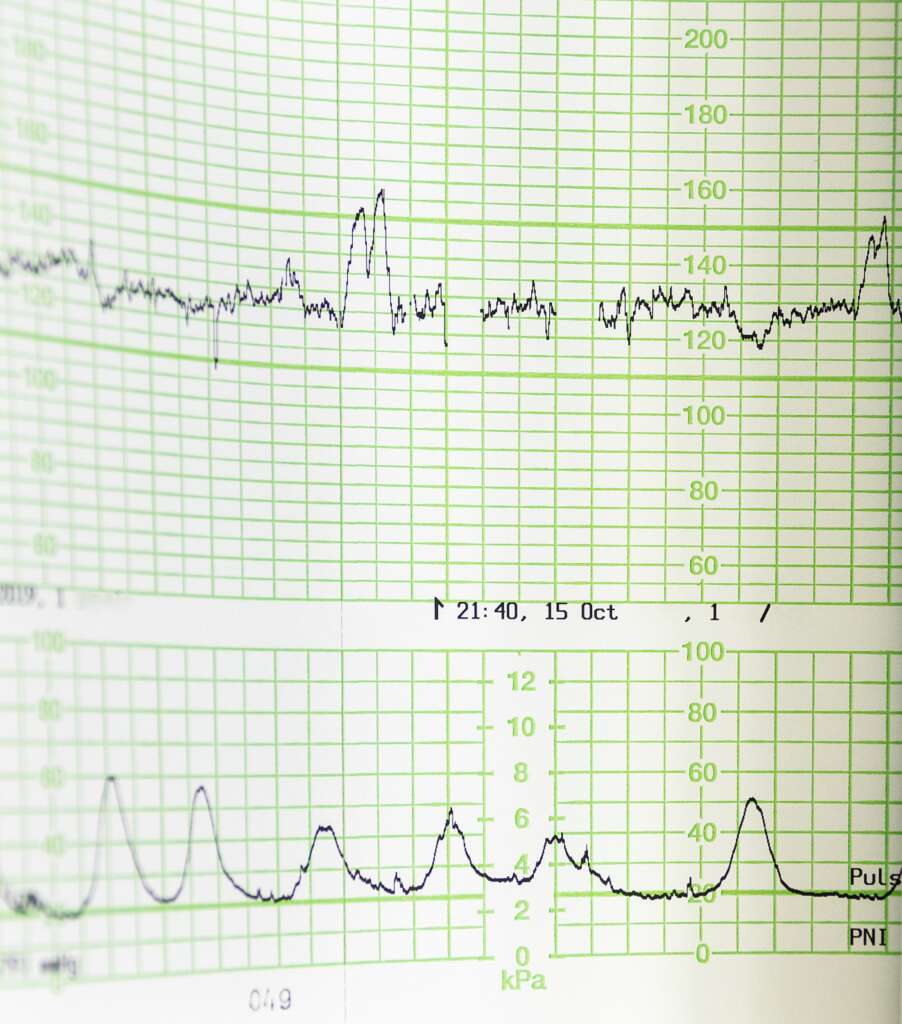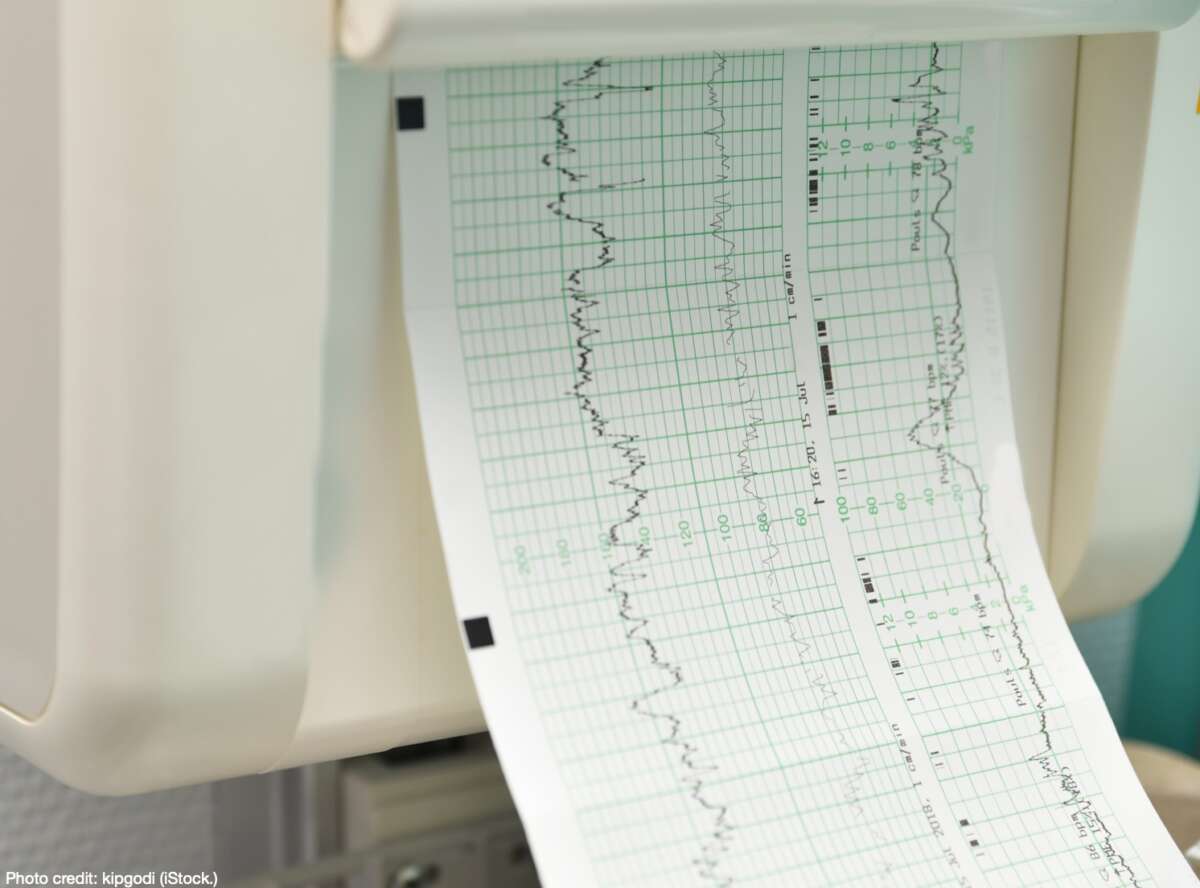
Ladies with babies have almost always experienced labor, unless they were sectioned or their children were adopted. The anticipation of childbirth while pregnant, the approaching date of confinement, the first contractions, bring joy to an expectant mother’s heart. Hurried visits to the clinic or hospital in the last trimester only to be turned away and sent home with a disappointing diagnosis of Braxton Hicks contractions otherwise known as false labor are on the other hand discouraging.
Some women get very excited when they first feel contractions. But these sporatic contractions may not be related to true labor. If you have Braxton Hicks contractions, you are perhaps too focused on your symptoms or too impatient for the real show to begin. The National Institute of Health (NIH) has some advice:
- “Change position or activity level: if the woman has been very active, lie down; if the woman has been sitting for an extended time, go for a walk.
- Relax: take a warm bath, get a massage, read a book, listen to music, or take a nap.
- Drink water to rehydrate.”
What the NIH is saying is that it is possible to get too focused on your symptoms. The same is true for pain, palpitations, and so on. Diversion, such as watching television, is a good way to lower the pain you are experiencing from a fracture or post-op. Slow, deep breaths can often resolve nausea as well as Dramamine or Compazine. If you relax, chest palpitations may eventually resolve (though if you have problems with heart palpitations you should be under a doctor’s care.)
True labor has three stages. According to the Mayo Clinic:
“The first stage of labor and birth occurs when you begin to feel persistent contractions. These contractions become stronger, more regular and more frequent over time. They cause the cervix to open (dilate) and soften as well as shorten and thin (efface) to allow your baby to move into the birth canal.”
The first stage of labor
There are two components to the first stage of labor. Early labor which is irregular and unpredictable and which may last from a few hours to a few days arrives first. Active labor where the contractions become stronger and more regular is a hallmark of the second part of the first stage of labor. The woman’s obstetrician will give her instructions in advance with indications concerning when she should report to the Labor and Delivery floor of the local hospital. It is during active labor that the mother’s “water” breaks (i.e., the amniotic sac.)
The second stage of labor
The baby is actually born during the second stage of labor and the placenta is delivered in the third stage.
After reporting to the Labor and Delivery floor, you will likely be examined, changed into a gown and hooked up to a machine that looks like an EKG. This is called a Cardiotocograph (CTG.) It uses a “Doppler ultrasound transducer to monitor the baby’s heart rate and a pressure transducer to monitor uterine contractions, both of which are linked to a recording device.”
There will be a nurse, perhaps a nurse’s aide to follow you along, take your vital signs, and check to see how far your cervix has dilated. Often the cervix dilates one centimeter an hour, sometimes more quickly if you’ve had other babies.
There are other indicators that delivery is approaching. Back pain is one, and pink spotting from the mucus plug being expelled is another. Regardless of contractions, if your water breaks, the baby is generally delivered within twenty-four hours (unless that has changed recently.)
As stressful as labor and delivery is, it is even more so for the baby. The first thing the nurse checks is the baby’s heart rate using the CTG. Is the rate too fast? Is it too slow? If the fetal heart rate is too fast, the baby may not get enough oxygen. A heart rate that is too slow may mean that the umbilical cord is being compressed, or it could be caused by the drugs that the mother is getting. There are other transient or temporary fluctuations in the fetal heart rate that need monitoring as well.
Evaluating contractions

But let’s go back to the contractions. If you refer to the graph I’ve included and look at the bottom line, you’ll see a series of large squares. Each square is equal to one minute of time. Contractions are measured from the beginning of one contraction to the beginning of the next. The square measures the frequency of the mother’s contractions. From bottom-to-top on the graph paper you’ll see a series of numbers (20, 40, 60, 80, etc.). This measures the strength or intensity of the contractions. Intensity of a contraction for a patient in active labor is between 40-60 mmHg. This is the same unit of measurement used when taking a blood pressure. When the contractions occur at regular intervals and at a certain level of intensity (60 mmHg or even higher), and the mother’s cervix reaches 10 cm in diameter, the baby is ready to be born.
Preparing for delivery
At some point during prep, the mother gets a saddle block or some other anesthetic, the doctor is paged, the staff scrubs up and the mother is wheeled into the delivery room and prepped. The doctor arrives (hopefully before the baby is born) and everyone (the mom, the dad, the baby, the grandparents, the Uber driver and the poodle all pose for pictures.)

But . . .

But this post is not actually about childbirth. Last night I was on a conference call with some guys I know from out of state. One person brought up the recent earthquake in Morocco with almost 2,200 confirmed dead so far. He then mentioned the current flooding in Libya where so far 8,000 people are known to have died, as well as the fires on Mauri and in Canada, the war in Ukraine, tensions with China and North Korea, famine, the political polarization in the U.S., terrorist attacks against Israel and so on. Add to this thousands and thousands of migrants each month streaming across our border, a biosphere that is becoming increasingly unstable and economic uncertainty. My friend wondered what tha heck is going on and how will this all end as many of us likely wonder as well. Then, there are all the threats of nuclear war coming from Russia. Are we staring down the approach of Armageddon?
In Matthew chapter 24, Jesus speaks of the end times using the analogy of a woman in labor. In the end times, people will see themselves as the messiah, the chosen one (v. 5.) There will be wars and rumors of war (v. 6.) War like we have in Ukraine and Sudan. There are also civil wars in Libya, Myanmar, Syria and Somalia. NATO is currently rushing forces to Kosovo as Serbian troops mass on the border with that country, and Armenia is crying for help to protect it against Azerbaijani aggression (recall the genocide of Armenians at the hands of the Turks in 1915 where 600,000 to 1.5 million Armenians died.) And there are terrorist insurgencies in Niger, Chad, Cameroon and Ivory Coast. Several candidates for president in the U.S. are promising to send U.S. forces to Mexico to fight the drug cartels if elected.

In verse 7, Jesus says “There will be famines and earthquakes in various places.” Like the famine in South Sudan and nine other countries that is causing heartbreaking deprevation at the moment. The most recent earthquake, a 6.8 magniture on the Richter scale occured in Morocco five days ago. Then there was the 7.8 in Turkey and Syria last February. There were 55,000 dead from that one. Last month Indonesia had a 7.1 quake and the month before Alaska had a 7.2.
But in verse 8, He notes: “All these are the beginning of birth pains.”
Of course, we’ve always had wars and famines. We’ve always had earthquakes, even tsunamis in our lifetime. How is what we see today any different than in 1066? Back in 1765 in early America, King George of England was even thought to be the Beast of Revelation (Revelation, 13:17) when he forced the Stamp Act on the colonies. Without a stamp, one could not buy or sell. The colonials thought of the stamp as the “Mark of the Beast” (i.e., 666.) Consider this; If you’ve ever attended a symphony presentation, you may have witnessed the different orchestral sections “checking in.” You might hear the strings tuning their instruments, and then the brass, or the percussion section, or the woodwinds changing their reeds. After a few faint or short bars of a musical piece, the conductor approaches, and a few moments later, the whole orchestra sounds out in all its power and glory. In a historical sense, this orchestra has been “tuning up” for two thousand years. Think of each of the catastrophic variables that Jesus is referring to as a different section of the symphonic orchestra. Put differently, these events (the earthquakes, the famines, the wars) are just Braxton Hicks sort of contractions. True labor has not yet begun. But the handwriting is on the wall.
In verse 10 He continues: “At that time many will turn away from the faith and will betray and hate each other.” Partisanship in America is destroying not only lifelong friendships, but families as well, as NPR points out:
“If you find yourself fighting with a friend over politics, or frustrated and furious with your nearest and dearest over whom they’re supporting for president, you’re hardly alone. A recent survey shows just how much the nation’s bitter political divide is causing social splintering and taking a toll on friendships. Even decades-long relationships have been caving under the pressure, giving new meaning to ‘social distancing.
‘I did straight up say, “Dude, I’m done. Lose my number,”‘” said Shama Davis from Los Angeles, recalling when he ‘unfriended’ a guy he’d been friends with since high school 25 years ago.
‘I just hung up on my end and proceeded to just block him in every possible way,’ said Joni Jensen from New York, still fuming over the guy she felt compelled to dump.
And betraying just a tinge of regret about cutting off his cousins, Ricardo Deforest of Tampa, Fla., conceded, ‘I hate to say it because family is everything,'”‘ before unabashedly proclaiming, ‘I disowned them. In my mind they’re not family anymore.'”
The examples above are a sample of the many Americans for whom political rifts have deepened and destroyed relationships. It’s one thing to disagree about something such as tax policy. But many people today see their differences with others as that of “basic morality, core values and character, and that cannot be overlooked.” Policies and proposals such as deficit spending, funding for police, even spending for the FBI, regulation of banking, library books for fifth graders, are no longer thought of by many as either good or bad policy choices, but in terms of being morally right versus evil.
And everyone knows how church attendance has dropped off, even before the pandemic began. The infusion of partisan politics (either from the left or the right) into the pulpit only adds to the demise of organized Christianity.
In verse 11 Jesus warns “many false prophets will appear and deceive many people.” I’ve actually written several posts on this over the past few years.
In verse 12 we are told “Because of the increase of wickedness, the love of most will grow cold.” New born babies are discarded in toilets and dumpsters. Children kill parents and teachers and so on. But . . .
In verse 13, Jesus promises that “the one who stands firm to the end will be saved.” If, as Kipling wrote in his poem with the same title:
“If you can keep your head when all about you
Are losing theirs and blaming it on you;
If you can trust yourself when all men doubt you,
But make allowance for their doubting too;
If you can wait and not be tired by waiting,
Or, being lied about, don’t deal in lies,
Or, being hated, don’t give way to hating,
And yet don’t look too good, nor talk too wise . . .”If you firmly root yourself in God’s word and love and fear Him, trusting in the one true Messiah and Him alone, you will prevail. Because Scripture promises us that the power to stay strong, focused and faithful does not even come from us, but from Jesus, Himself. As Jude writes:
“Now unto him that is able to keep you from falling, and to present you faultless before the presence of his glory with exceeding joy, to the only wise God our Saviour, be glory and majesty, dominion and power, both now and ever. Amen”
p.s. There is more about the end in Matthew chapter 24 that Jesus speaks of. I’ve just covered a few of the highlights. If you are not a Christian and want to know how to become one, check out this post here.



